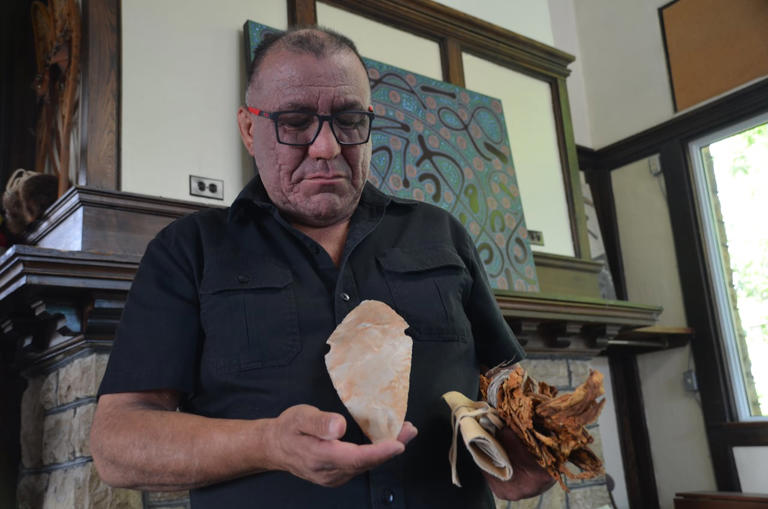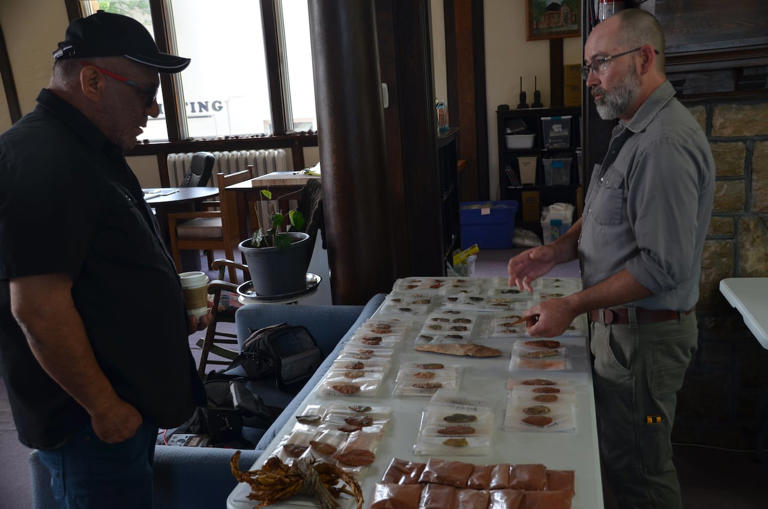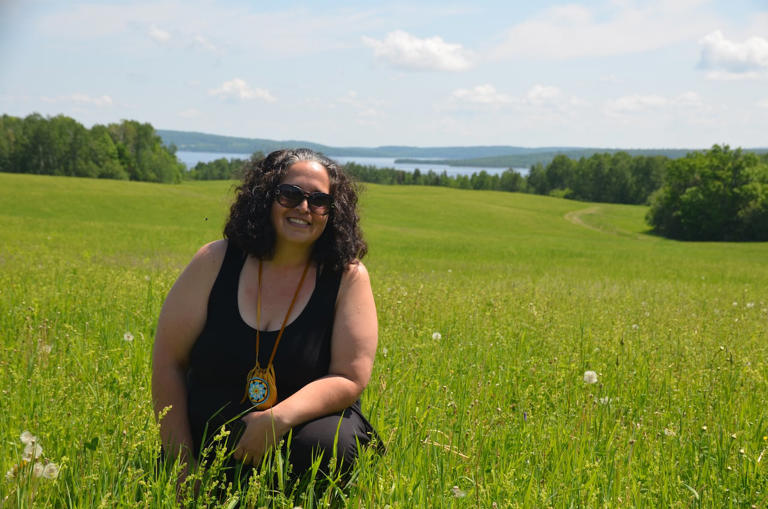Story by Erik White •CBC
The call came on a Sunday. A couple digging up a stump on their land not far from New Liskeard had found what they thought was an arrowhead.
Archeologist Ryan Primrose grabbed his gear and headed out there, thinking it might just be an "unusual rock."
And it was very unusual. A foot-long piece of quartz, carved into a point.
"Immediately it became clear that this was a very rare site," says Primrose.
Buried in the ground, he found dozens of other ancient stone tools, packed in with red ochre— a dye used to paint pictographs— and a small piece of charcoal dating back 3,100 years.
That's before the Roman empire and before the city of Rome was even founded.
One of the key parts of excavating that find, known as the McLean Cache, was a call to Wayne McKenzie from Timiskaming First Nation, who held a feast and ceremony on the site where his ancestors had once walked.
He says he still gets a thrill holding that 3,000-year-old piece of quartz.
"It was pretty awesome to see. Really filled my heart to see it," says McKenzie.
"I'm a traditional man. So I sing a lot of old traditional songs passed down thousands of years, but to get a touch of it. It's home."

Wayne McKenzie of Timiskaming First Nation says it 'filled his heart' to hold objects used by his ancestors 3,000 years ago. (Erik White/CBC)© Provided by cbc.ca
Primrose says many of the tools were never used and the people who buried them likely never intended to return for them, instead leaving them as some kind of offering.
He says there are also tools that are very similar to those found in Michigan and Illinois, suggesting a trade network connection between the Great Lakes and the Temiskaming district far earlier than originally thought.
McKenzie says this part of his people's history is not well understood, including in their own communities, and hopes more will be revealed in the coming years.
"There is kind of a messy history part there. There's also a beautiful part of what was here and how we did live," he said.

Ryan Primrose (right) is trying to change how archeology is done in northern Ontario by working alongside Indigenous elders and communities. (Erik White/CBC)© Provided by cbc.ca
For years, Primrose has hired Indigenous people to work on his archeological digs to "provide education as well as employment and most importantly to put them in contact with their own history."
But now he wants to take that further and develop a new process where First Nations people work along side archeologists, then take their findings back to elders to be interpreted and decide how the excavation should proceed.
"So that one is not viewed as superior to the other, but are both viewed as ways to understand the past," says Primrose, who early in his career worked on Mayan sites in central America.

Primrose says some of the tools found in the 3,100-year-old cache are very similar to those found in Michigan and Illinois, suggesting there was greater trade between the Great Lakes and the Temiskaming area than originally thought. (Erik White/CBC)© Provided by cbc.ca
"I think it behooves us as archeologists to involve those First Nations people in the understanding of that history, which has not yet been written, so they themselves can be authors of the past."
He wants to test out that new process at a place known as Mill Creek, which flows out of Lake Temiskaming on land owned by the City of Temiskaming Shores.
Tina Nichol grew up splashing around in the creek and playing on trails that she didn't know were likely walked by her ancestors centuries before.
When her grandfather, who used to take her down to Mill Creek, died when she was 16, they found his birth certificate in a shoebox showing that he was Indigenous.
"You felt that even as a child playing down there. You knew how special and sacred that place was," said Nichol.
"Makes you feel good to know that you were walking in their steps."

Tina Nichol, a Métis woman who grew up in Haileybury, used to play as a kid in the Mill Creek area off Lake Temiskaming and now hopes to be involved in an archeological dig on the ancient portage trail. (Erik White/CBC)© Provided by cbc.ca
Now working for the Keepers of the Circle, a women's hub in the Temiskaming area, Nichol helps organize an annual pow wow at Mill Creek for National Indigenous Peoples Day.
And she is excited to be involved in future archeological digs on the site and find out if ceremonies were also held there in the past.
"We're all new to this. This is a new type of relationship we're having with scientists. So I think we need to take our time and do it culturally appropriately and learn from the past," Nichol said.
"It's a deep love and very humbling to be present and witness both the findings and growing up there and seeing it unfold, you can't ask for better truth and reconciliation all at the same time."
No comments:
Post a Comment